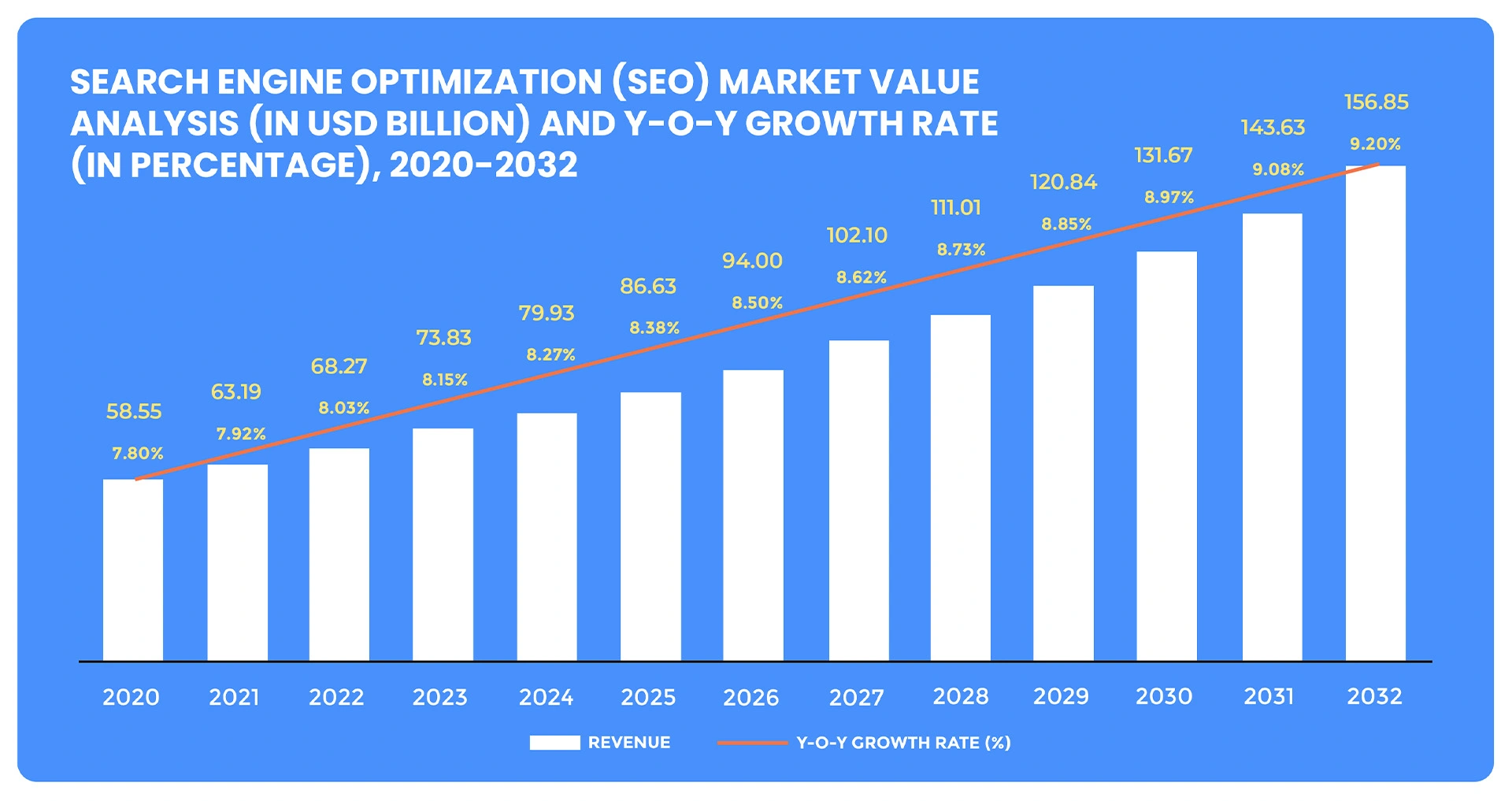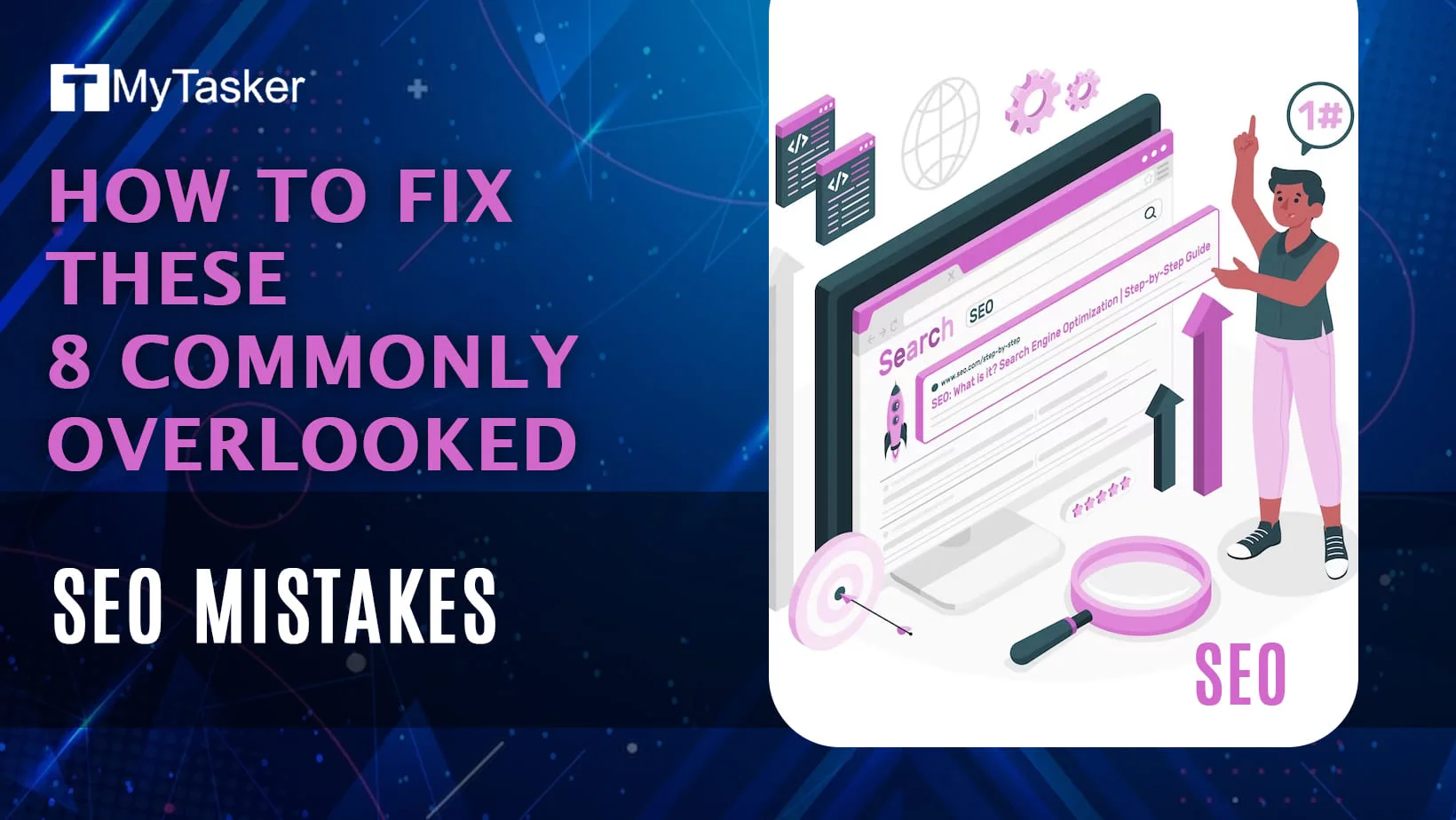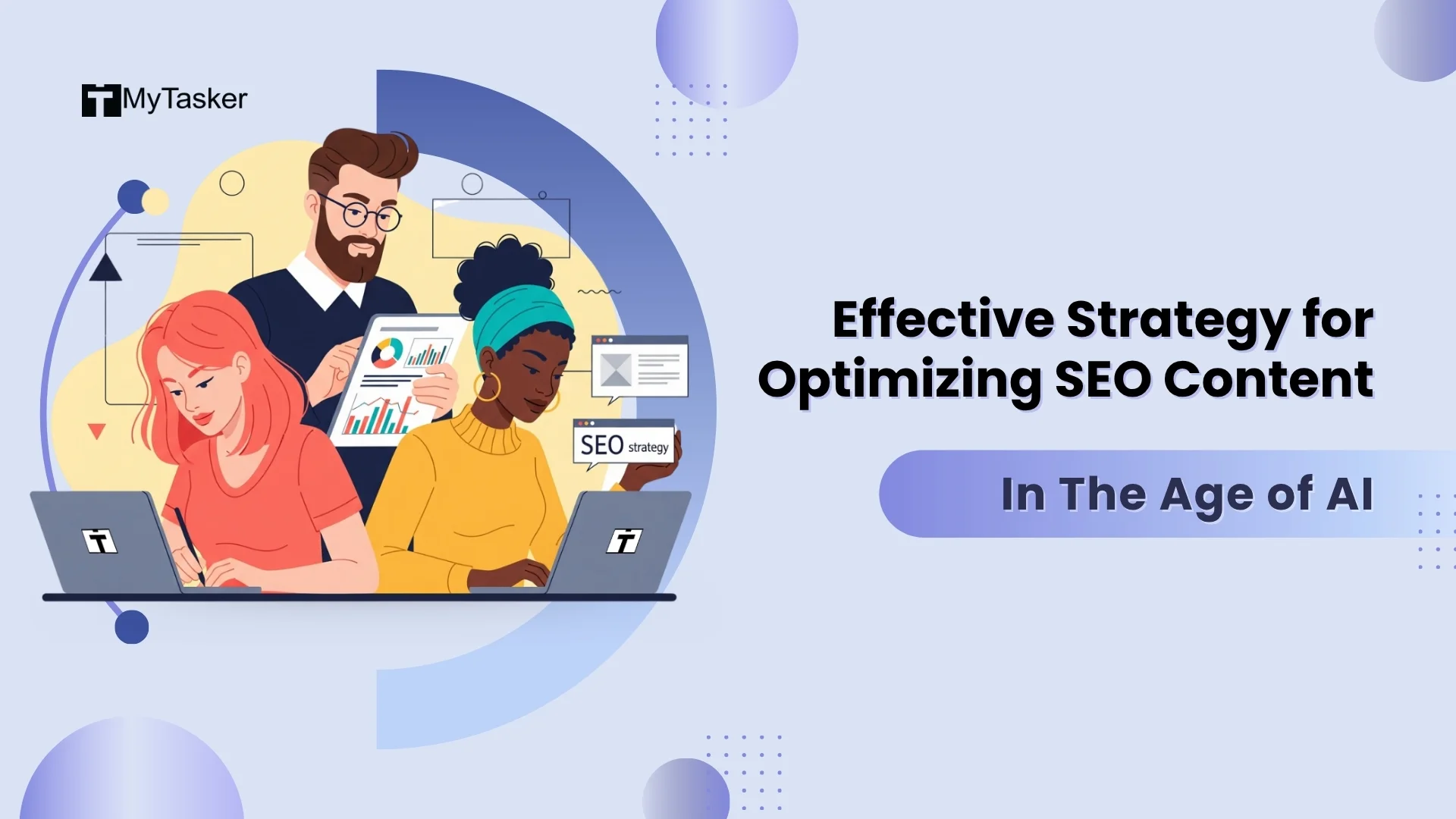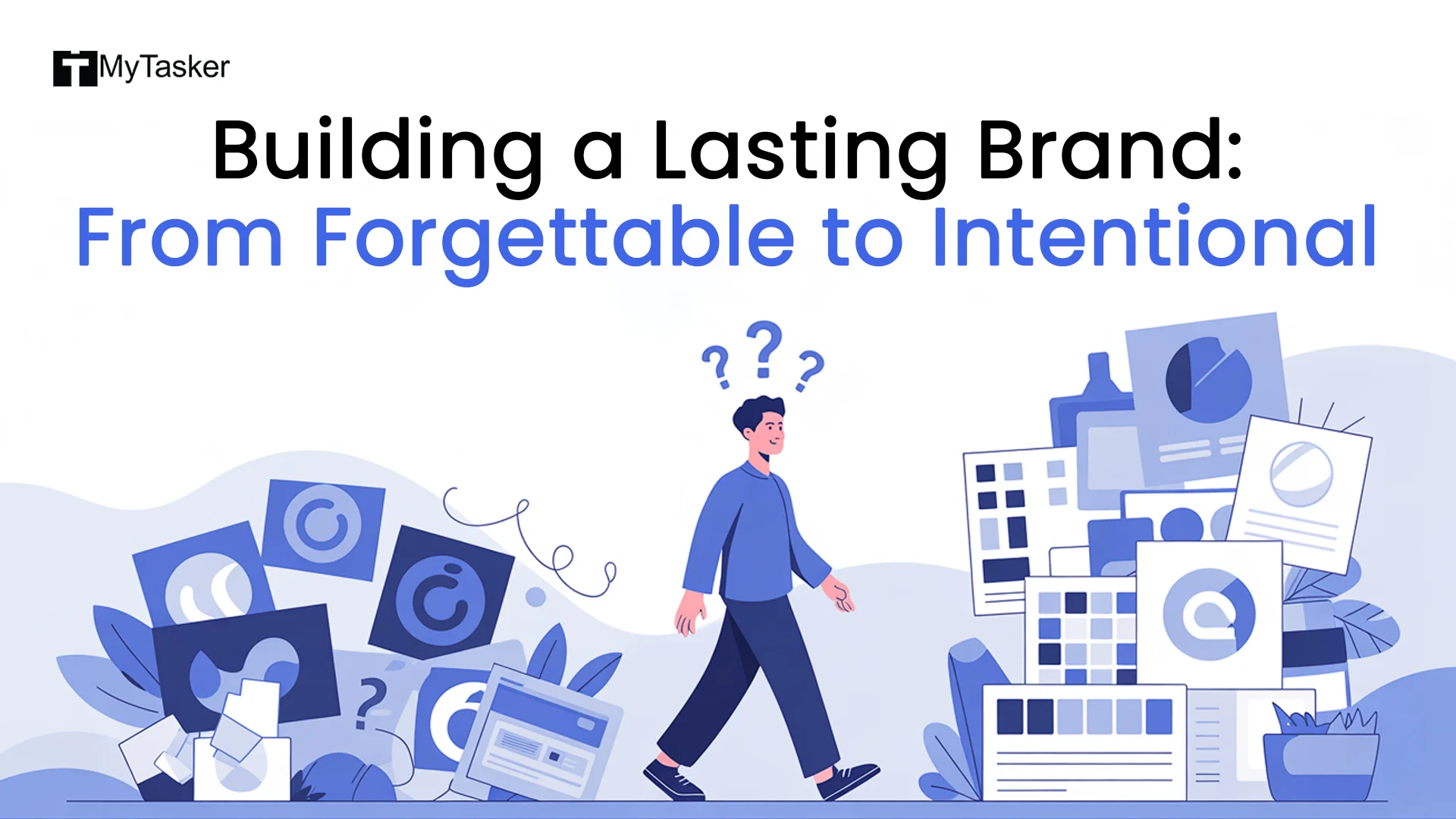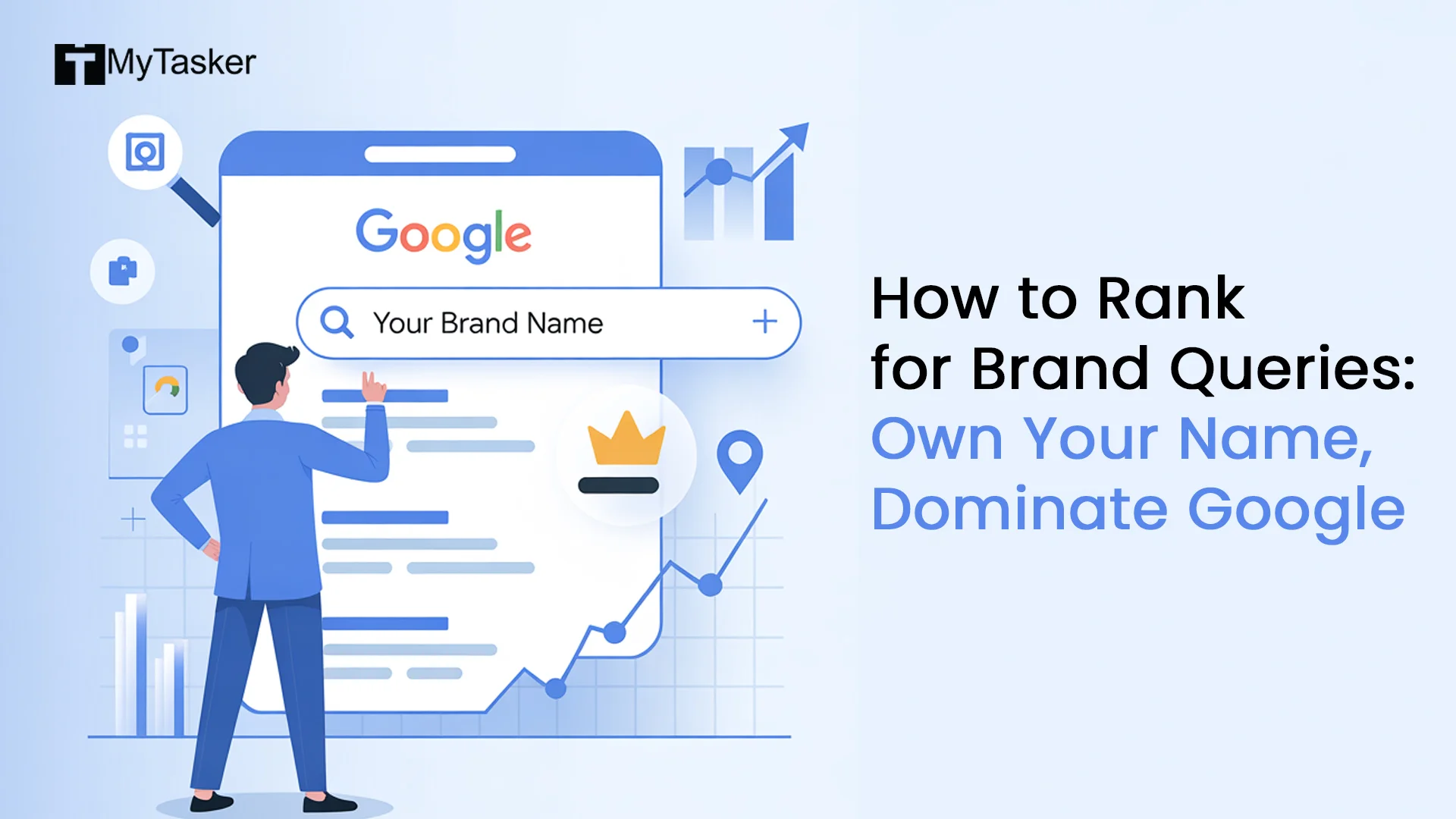What Are Some Common SEO Mistakes?
SEO is an important element of online marketing, and even the best SEO experts can make mistakes that harm the site. Here are some of the most common SEO mistakes to watch out for:
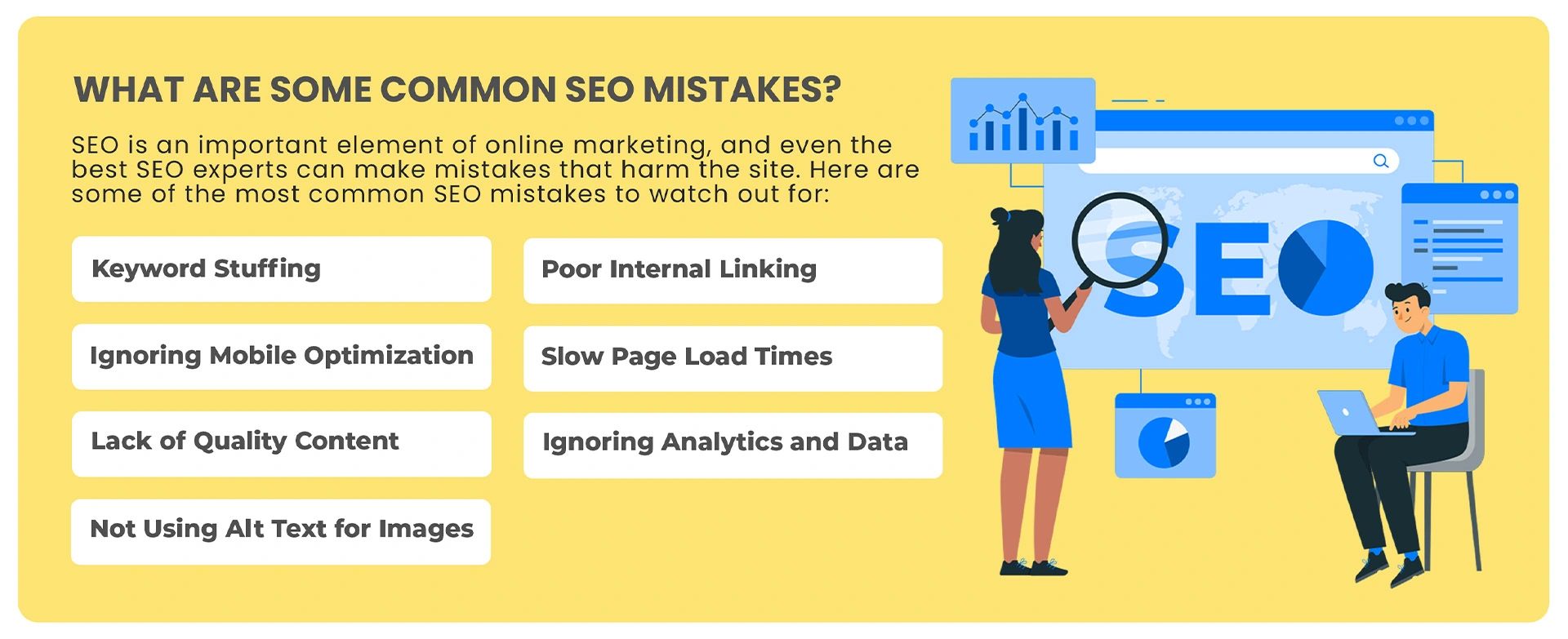
Keyword Stuffing
Keyword stuffing makes the content look very unnatural and rather hard to understand.
Ignoring Mobile Optimization
Lack of mobile-friendly websites which make it difficult to navigate through with a mobile device.
Lack of Quality Content
Creating content that is poor, weak, inconsequential and does not share anything that will be useful to the reader.
Not Using Alt Text for Images
Leaving out alt text in images can be detrimental to both accessibility and search engine rankings.
Poor Internal Linking
Internal linking that is poor, random and does not help the user or search engine to navigate within your site.
Slow Page Load Times
Web pages that take quite a long time to open, thus causing high bounce rates and low ranking.
Ignoring Analytics and Data
Lack of monitoring and evaluating website performance and thus the possibility of enhancing the website performance is lost.
What Is An SEO Error?
An SEO error is any problem that affects the positioning of a website in a search engine result page. These are critical mistakes that need to be corrected to continue the growth and stability of the site. Here are some examples of common SEO errors:
Broken Links
Broken links, which cause the user to be directed to the “404-not found page”.
Duplicate Content
Duplicate content on different pages causes confusion in the search engines and hampers their ranking ability.
Missing Meta Descriptions
Not optimizing meta descriptions and tags, which can negatively impact the click-through rates from organic search engine results.
Improper Redirects
Employing improper redirects (for instance 302 instead of 301) may mislead the search engines on the appropriate page to crawl.
Misconfigured Robots.txt File
Disabling the access to important web parts with the help of search engine configuration mistakes.
Unoptimized URL Structures
Long, generic, and noninformative URLs that do not reflect the content of the webpage to the search engines.

How To Find SEO Errors On A Website?
Identifying SEO mistakes on your site is crucial in order to keep good rankings and enhance the performance of the site. Here are some effective ways to find SEO errors:
Use SEO Audit Tools
Google Search Console, SEMrush, or Ahrefs can be used to detect technical problems, broken links, and other problems.
Conduct Manual Checks
Manually audit your website to identify usability issues, broken links, and correct content layout.
Check Page Speed
There are factors involving loading time that can be detected using tools such as Google PageSpeed Insights.
Analyze Analytics
Check Google Analytics to identify spikes and dips in traffic, high bounce rates, or low engagement.
Inspect Crawl Errors
Google Search Console can be used to view crawl errors, which are issues that stop search engines from accessing your website.
Review Mobile Compatibility
Check how your website works on different mobile devices to see if it is 100% mobile-friendly.
What Is The Biggest Problem With SEO?
Even though SEO is an efficient method for getting traffic and creating leads, it also has its drawbacks. The biggest problems with SEO often stem from the following issues:

Constantly Changing Algorithms
It is a common factor that search engines constantly release new updates in their algorithms, which is hard for businesses to keep up with.
Overemphasis on Short-Term Gains
Overlooking long-term strategies and targeting temporary solutions or strategies that are regarded as black-hat SEO.
Content Saturation
With so much content created, it becomes hard to create unique content and rank for highly competitive keywords.
Lack of Expertise
It is quite common that many companies face difficulties in comprehending and applying SEO guidelines.
Dependence on External Factors
It is important to note that there are factors that occur beyond the website owner’s control like link popularity or backlinks.
Time-Consuming
SEO is not an overnight process and may take a few months to start yielding good results.
How To Fix SEO Issues?
After discovering that your website has SEO problems, it is crucial to implement the correct procedures to rectify the problem and improve your site. Here are some key actions you can take:
Resolve Broken Links
Fix or replace links that lead to dead ends with links to other working pages.
Improve Page Load Speed
Compress images, enable browser caching, and reduce JavaScript and CSS files to enhance your site’s performance.
Enhance Mobile Optimization
Make sure your site is mobile-friendly and easy to navigate, with short loading times and seamless usability across devices.
Update and Expand Content
Update the content often to maintain relevance and provide more value with detailed and well-researched pieces.
Optimize Meta Tags
Create specific, persuasive meta titles and descriptions for every page that include keywords.
Fix Duplicate Content
Employ canonical tags or combine pages with similar content to prevent any duplication problems.
Enhance Internal Linking
The internal linking should be done in a way that the visitors can easily navigate through the pages and this will help the SEO too.
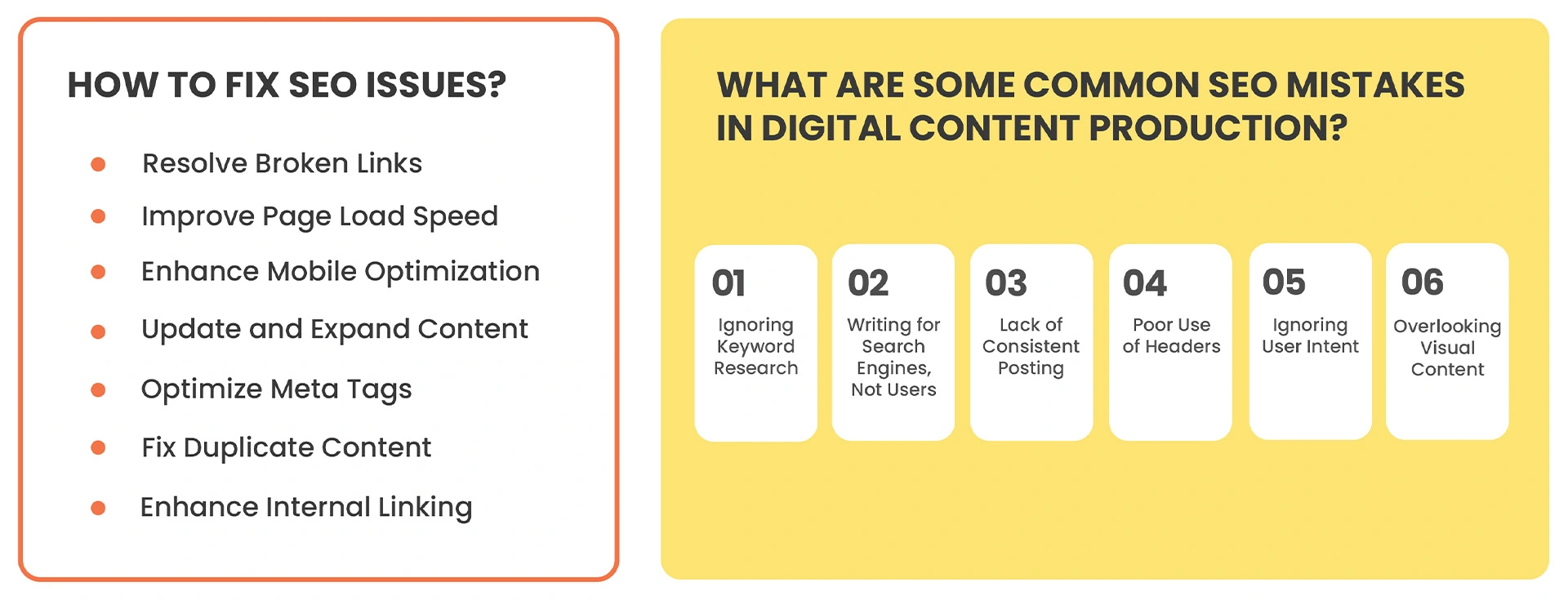
What Are Some Common SEO Mistakes In Digital Content Production?
To generate content that would be easily visible on search engines, certain processes must be followed. However, several mistakes negatively affect SEO efforts. Here are some of them:
Ignoring Keyword Research
Keywords should be analyzed and incorporated into the content but if this is not done, the site may have little to no presence on search engines.
Writing for Search Engines, Not Users
Developing content that is more oriented toward optimization indicators rather than the target audience’s interests.
Lack of Consistent Posting
It is worth noting that inconsistent posting could lead to traffic and engagement problems.
Poor Use of Headers
Failure to deploy the header tags (H1, H2, etc. ) correctly which affects the content formatting and SEO.
Ignoring User Intent
Failure to create content relevant to the search strings and topics that users are interested in.
Overlooking Visual Content
Leaving out or not fine-tuning images, videos, or graphics that are beneficial to the experience of the users.
What Are The Common SEO Mistakes?
SEO is a very technical area of work and one can easily make a mistake that can seriously affect the performance of the website. Here are some of the most common SEO mistakes to avoid:
Skipping Keyword Optimization
Failure to incorporate keywords in the titles, headings and body text.
Neglecting Local SEO
Lack of proper targeting of local keywords or not having a properly optimized Google My Business listing.
Weak Backlink Profile
Lack of focus on the creation of quality backlinks to your site.
Ignoring Technical SEO
Ignoring factors such as site speed, mobile friendliness, and security (HTTPs).
Lack of User Experience Focus
Lack of good planning and design of a website that is not very easy to use and navigate.
Overlooking Analytics
Failing to revisit SEO metrics and adjust the strategy based on the findings.
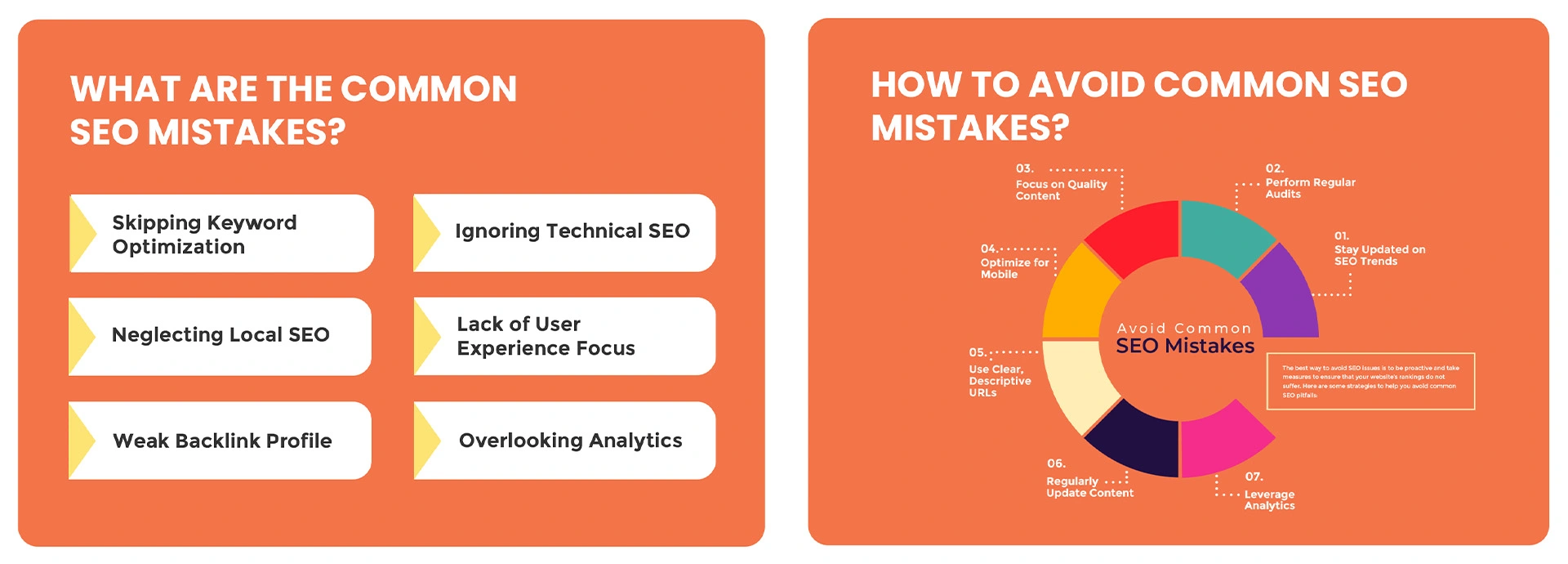
How To Avoid Common SEO Mistakes?
The best way to avoid SEO issues is to be proactive and take measures to ensure that your website’s rankings do not suffer. Here are some strategies to help you avoid common SEO pitfalls:
Stay Updated on SEO Trends
Read SEO blogs, participate in webinars, and track new changes in SEO.
Perform Regular Audits
It is wise to perform SEO audits frequently in order to identify problems and solve them before they affect the rankings.
Focus on Quality Content
Focus on producing highly relevant and high-quality content to meet the users’ requirements.
Optimize for Mobile
Make sure your website is responsive and loads quickly on mobile devices as well as computer screens.
Use Clear, Descriptive URLs
The use of URL structures should be kept simple, meaningful and relevant to the content of the page.
Regularly Update Content
Make sure that your content is up to date by adding new content to it from time to time.
Leverage Analytics
By regularly analyzing the data provided by Google Analytics and Google Search Console, you can fine-tune SEO.
